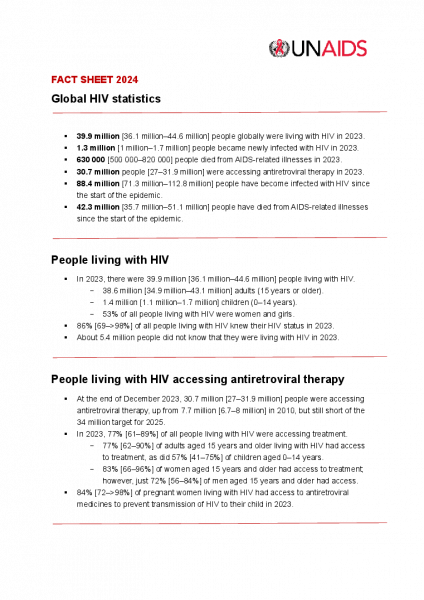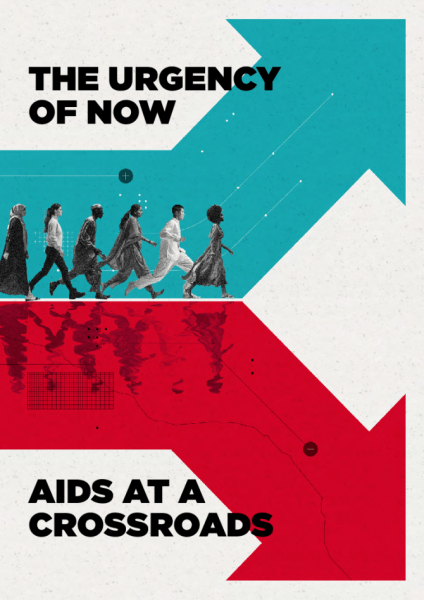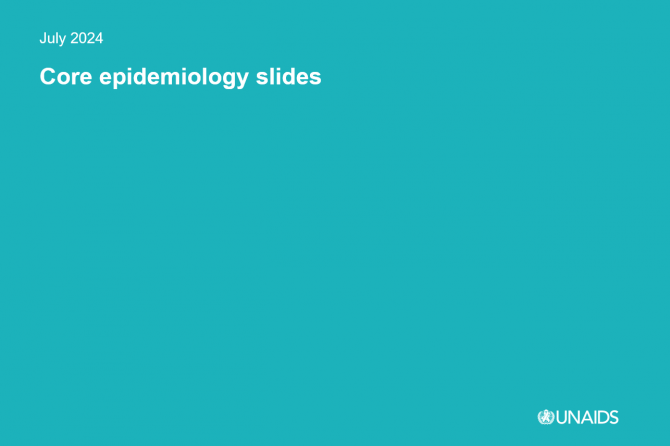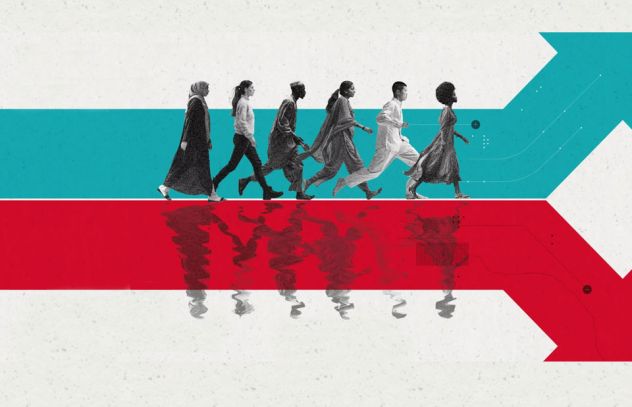Global HIV statistics
- 39.9 million [36.1 million–44.6 million] people globally were living with HIV in 2023.
- 1.3 million [1 million–1.7 million] people became newly infected with HIV in 2023.
- 630 000 [500 000–820 000] people died from AIDS-related illnesses in 2023.
- 30.7 million people [27–31.9 million] were accessing antiretroviral therapy in 2023.
- 88.4 million [71.3 million–112.8 million] people have become infected with HIV since the start of the epidemic.
- 42.3 million [35.7 million–51.1 million] people have died from AIDS-related illnesses since the start of the epidemic
People living with HIV
- In 2023, there were 39.9 million [36.1 million–44.6 million] people living with HIV.
- 38.6 million [34.9 million–43.1 million] adults (15 years or older).
- 1.4 million [1.1 million–1.7 million] children (0–14 years).
- 53% of all people living with HIV were women and girls.
- 86% [69–>98%] of all people living with HIV knew their HIV status in 2023.
- About 5.4 million people did not know that they were living with HIV in 2023.
People living with HIV accessing antiretroviral therapy
- At the end of December 2023, 30.7 million [27–31.9 million] people were accessing antiretroviral therapy, up from 7.7 million [6.7–8 million] in 2010, but still short of the 34 million target for 2025.
- In 2023, 77% [61–89%] of all people living with HIV were accessing treatment.
- 77% [62–90%] of adults aged 15 years and older living with HIV had access to treatment, as did 57% [41–75%] of children aged 0–14 years.
- 83% [66–96%] of women aged 15 years and older had access to treatment; however, just 72% [56–84%] of men aged 15 years and older had access.
- 84% [72–>98%] of pregnant women living with HIV had access to antiretroviral medicines to prevent transmission of HIV to their child in 2023.
New HIV infections
- New HIV infections have been reduced by 60% since the peak in 1995.
- In 2023, 1.3 million [1 million–1.7 million] people were newly infected with HIV, compared to 3.3 million [2.6 million–4.2 million] people in 1995.
- Women and girls accounted for 44% of all new infections in 2023.
- Since 2010, new HIV infections have declined by 39%, from 2.1 million [1.7 million–2.7 million] to 1.3 million [1 million–1.7 million] in 2023. However, this falls far short of the target of getting below 370 000 by 2025.
- Since 2010, new HIV infections among children have declined by 62%, from 300 000 [220 000–440 000] in 2010 to 120 000 [83 000–170 000] in 2023. Although progress in reducing new HIV infections is greatest among children, progress has stalled in recent years.
AIDS-related deaths
- AIDS-related deaths have been reduced by 69% since the peak in 2004 and by 51% since 2010.
- In 2023, around 630 000 [500 000–820 000] people died from AIDS-related illnesses worldwide, compared to 2.1 million [1.6 million–2.7 million] people in 2004 and 1.3 million [1 million–1.7 million] people in 2010.
- The target for 2025 is fewer than 250 000.
- AIDS-related mortality has declined by 56% among women and girls and by 47% among men and boys since 2010.
- In 2023, someone died of HIV every minute.
People most affected by HIV
- Median HIV prevalence among the adult population (ages 15–49) was 0.8% globally. However, because of marginalization, discrimination and in some cases criminalization, median prevalence was higher among certain groups of people.
- 2.3% higher among young women and girls aged between 15 and 24 in eastern and southern Africa
- 7.7% higher among gay men and other men who have sex with men
- 3% higher among sex workers
- 5% higher among people who inject drugs
- 9.2% higher among transgender people
- 1.3% higher among people in prisons.
Women and girls
- Globally 44% of all new HIV infections were among women and girls (all ages) in 2023.
- In sub-Saharan Africa, women and girls (all ages) accounted for 62% of all new HIV infections. In all other geographical regions, over 73% of new HIV infections in 2023 occurred among men and boys.
- Every week, 4000 adolescent girls and young women aged 15–24 years became infected with HIV globally in 2023. 3100 of these infections occurred in sub-Saharan Africa.
Testing and treatment targets (95–95–95)
- In 2023, 86% [69–>98%] of all people living with HIV knew their HIV status. Among people who knew their status, 89% [71–>98%] were accessing treatment. And among people accessing treatment, 93% [74–>98%] were virally suppressed.
- Among children ages 0–14 years the 95–95–95 targets were 66% [47%–87%], 86% [62%–>98%], 84% [60%–>98%] Among women, the 95–95–95 targets were: 91% [72–>98%], 91% [73–>98%], and 94% [75–>98%].
- Among men, the 95–95–95 targets were: 83% [65–97%] of adult men living with HIV knew their HIV status, 86% [68–>98%] were accessing treatment and 94% [74–>98%] were virally suppressed.
- Among all people living with HIV, 86% [69–>98%] knew their status, 77% [61–89%] were accessing treatment and 72% [65–80%] were virally suppressed in 2023.
Investments
- At the end of 2023, US$ 19.8 billion (in constant 2019 United States dollars) was available for the AIDS response in low- and middle-income countries—around 59% was from domestic sources.
- Funding for HIV dropped by 5% from 2022 to 2023, and by 7.9% between 2020 and 2023.
- Funding is far short of the US$ 29.3 billion (in constant 2019 United States dollars) which will be required for the AIDS response in low- and middle-income countries, including countries formerly considered to be upper-income countries, in 2025 to get on track to end AIDS as a public health threat.
Download the full version to view regional statistics, global and regional data





